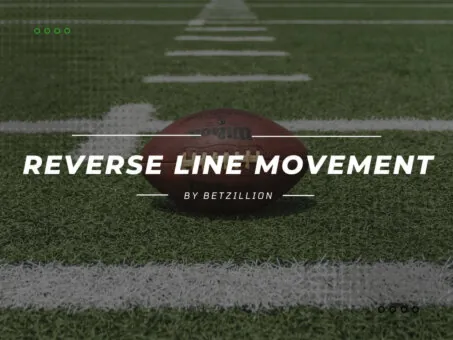Flag Bet Explained

A flag bet combines 4 selections into 23 predictions. It is a variation of the famous Yankee bet but with an added “up-and-down” component. This option consists of 6 doubles, 4 trebles, 1 four-fold accumulator, and 6 up-and-down pairs. Continue reading to find out everything there is to know about it.
The up-and-down option is a bit more complicated than the other 3 elements of the flag bet. It involves wagering on 2 choices from different events. However, the second selection depends on the first winning; hence, it is also called the conditional bet. In an example with A and B selection, an up-and-down bet begins with making a prediction for A selection. If it turns out to be correct, you pocket the profit while your original stake is wagered on selection B.
The second part works in reverse. You place another original bet on selection B, and if it wins, you keep the return and bet the original stake on selection A. If all your predictions come through, an up-and-down yields a return double the amount you’ll get if you placed 2 doubles separately.
Example of Flag Betting
Let’s examine a practical example that will clear up any uncertainties you might have about this type of wagering. You place a flag bet on 4 different Premier League matches:
- Man City to beat Liverpool at odds of 2/1
- Wolves to beat Nottingham Forest at 1/2
- Arsenal to beat Leeds at 1/3
- Chelsea to beat Aston Villa at 3/1
If you want to gamble $1 per combination, you are putting a total of $23 into your flag wager. In a scenario where all your selections come through, you’ll get a payout of $152.83. This is a substantial return compared to placing the same stake on just one accumulator or four singles. This example also applies to a flag bet in horse racing and other sports.
How to Place a Flag Bet
The process of placing a flag bet begins with determining 4 selections you want to include in your wager. Next, you may enter the selections and odds into a flag betting calculator to see the potential payouts per combination and total payout. After that, you determine your stake and place a bet.
Note that you may not easily find this type of wager at an online bookmaker’s “multiples” option. To make sure you don’t experience any issues, turn to popular sportsbooks like:
- bet365
- Boylesports
- William Hill
- Paddy Power
- Betfred, etc.
How Do You Calculate Flag Bets
Calculating the payouts for flag bets can be complicated as it involves odds across multiple wagers and how many of your selections win. Therefore, we recommend using a flag betting calculator to simplify things instead of trying to do it yourself. Most bookies offer it on their platform, while you can also find it at specialized sites.
What Is a Flag Bet Calculator and How to Use It?
Below is a step-by-step guide on how to use a flag betting calculator:
- Enter the unit stake
- Select the odds format, whether fractions, decimals, or American
- Choose whether your bets are each-way bets or not
- Enter your selections and corresponding odds
- Click on the “Calculate” button, and the calculator will come up with the total stake, payout, and profit.
What Sports Work Well With Flag Bets?
Flag wagers are available for almost every competitive sport, as you can make 4 distinct selections from it. However, football and horse racing remain the most popular among punters who prefer this option. They have plenty of events taking place every day, and it is easy to find matches or races to clear the “4 selections” requirement.
Knowledge of the sport you’re gambling is crucial if you want to increase your chances of winning. For example, making football bets requires familiarity with the sport, competitions, and teams and players involved. Only then can you make informed predictions, get them right, and bag tidy profits.
Flagged Bets Advantages & Risks
Before you decide to engage in flag betting, you should be aware of some important pros and cons that come with it. Check them out below.
| PROS | CONS |
|---|---|
|
PROS
|
CONS
|
The Difference Between Flag Bets and Other Combination Bets
Besides flag bets, punters can opt for several other combination wagers like Yankee, Goliath, Trixie, Super Yankee, and Heinz bets. However, there are some notable differences between them.
For instance, a Yankee bet has four selections that are combined into 11 predictions: 6 doubles, four trebles, and one four-fold accumulator. Goliath bet, on the other hand, consists of 8 selections and amounts to 247 wagers. A Super Yankee includes 5 selections and 26 bets, while a Heinz bet requires 6 different selections and results in 57 bets.
Other Types of Flag Bets
Gamblers can also increase the number of selections in a flag bet to create different variations of this option. For example, Super Flag has 5 selections and 46 stakes: ten doubles, ten trebles, five 4-folds, one 5-fold, and ten up-and-down pairs. A Super Heinz Flag consists of 6 selections and comes up to 87 total wagers, while a Goliath Flag has 8 selections and 303 total predictions.
Is Flag Betting Worth It?
Flag betting can be an attractive option for punters who want to maximize their returns with a moderate stake. However, it is essential to approach it cautiously and do your research while carefully considering each selection you include.
Whether flag betting is worth it depends on your gambling strategy, risk tolerance, and goals. While some bettors may consider it a valuable tool in their wagering arsenal, others may prefer simple options that come with less risk. Whatever your approach, always remember to gamble responsibly and to only put down the money you can afford to lose to achieve betting success.
Frequently Asked Questions
-
What is a flag bet?A flag bet is a multi-bet combination of 4 selections that results in 23 wagers, including 6 doubles, 4 trebles, 1 four-fold accumulator, and 6 up-and-down pairs.
-
How many bets are in a super flag?The super flag bet has 5 selections instead of four. This increases the number of combinations to 46: 10 doubles, 10 trebles, 5 4-folds, one 5-fold, and 10 up-and-down pairs.
-
What is a flag bet in horse racing?A horse racing flag bet consists of 4 selections and 23 bets. The wager includes 6 doubles, 4 trebles, 1 fourfold accumulator, and 6 up-and-down SSA bets.
-
Still have questions?
Ask our experts
Related articles
Pari-Mutuel Betting Explained
Action and No Action in Sports Betting






